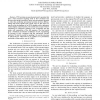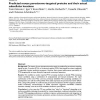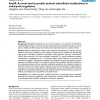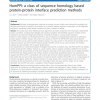91 search results - page 1 / 19 » Exploiting Sequence Dependencies in the Prediction of Peroxi... |
IDEAL
2005
Springer
13 years 10 months ago
2005
Springer
Prediction of peroxisomal matrix proteins generally depends on the presence of one of two distinct motifs at the end of the amino acid sequence. PTS1 peroxisomal proteins have a we...
CIBCB
2005
IEEE
13 years 10 months ago
2005
IEEE
— PTS1 proteins are peroxisomal matrix proteins that have a well conserved targeting motif at the C-terminal end. However, this motif is present in many non peroxisomal proteins ...
BMCBI
2008
13 years 4 months ago
2008
Background: The import of most intraperoxisomal proteins is mediated by peroxisome targeting signals at their C-termini (PTS1) or N-terminal regions (PTS2). Both signals have been...
BMCBI
2004
13 years 4 months ago
2004
Background: Subcellular localization of a new protein sequence is very important and fruitful for understanding its function. As the number of new genomes has dramatically increas...
BMCBI
2011
12 years 8 months ago
2011
Background: Although homology-based methods are among the most widely used methods for predicting the structure and function of proteins, the question as to whether interface sequ...




